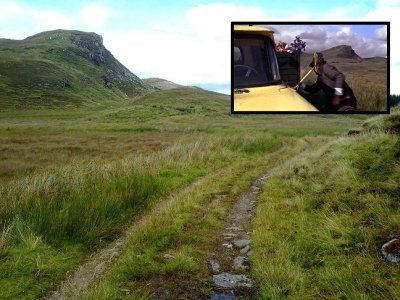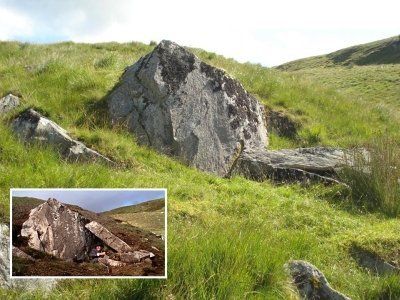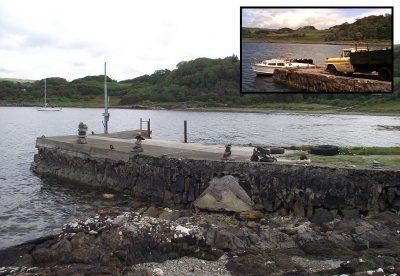Get in touch
555-555-5555
mymail@mailservice.com

Scotland
Since Pinewood Studios is just outside London, many of the Bond films were filmed in parts of the UK and its capital, often doubling for the most exotic countries. Truth is that this is not a recent trend. In fact this already started back in 1963. Most of From Russia With Love
(FRWL) was filmed in and around Istanbul, but because things had gotten a little out of control, for the film’s finale the crew decided to play it safe and use Scotland. As this story will show, the production turned out to be an unbelievable accumulation of problems and it’s truly a miracle that this film came out the way it did and still is one of the highlights of the entire Bond series.
Even though the earliest inhabitants of Scotland wandered around 13000 years ago, the written history of Scotland begins with the arrival of the Romans in AD 71. Many attempts were undertaken to invade Scotland, but the Romans constantly encountered great resistance and counter attacks from the people. In the end they built Hadrian’s Wall in Northern England, marking the northern border of their Empire. Some time after the Romans were defeated, a Gaelic kingdom emerged in the western part of Scotland, called Dál Riata. In the north and east, a group of people called the Picts were living. They are assumed to have been the descendants of the Caledonians and other tribes mentioned by Roman historians. Pictland (or Pictavia) gradually merged with the kingdom of Dál Riata to form the Kingdom of Alba (Scotland).
The English invasion of Scotland in 1296 started the Wars of Scottish Independence, which ended in 1357 and resulted in Scotland retaining its status as an independent nation. The famous Scottish rebel leader during these days was William Wallace and his story is told in the film Braveheart. Mel Gibson’s 1995 epic drama somehow managed to win five Academy Awards (and was nominated for an additional five!) but came second on a list of "most historically inaccurate movies" in The Times, in 2009. In the humorous historiography An Utterly Impartial History of Britain, author John O'Farrell notes that Braveheart could not have been more historically inaccurate, even if a "plasticine dog" had been inserted in the film and the title changed to William Wallace and Gromit.
Continual warfare with England, civil wars and the increasing division between highlands and lowlands finally led to convincing the Scots elite to back a union with England. On 22 July 1706, the Treaty of Union was agreed between representatives of the Scots Parliament and the Parliament of England and the following year twin Acts of Union were passed by both parliaments to create the United Kingdom of Great Britain. In the 18th century, the Scottish Enlightenment and the industrial revolution made Scotland into an intellectual, commercial and industrial powerhouse. So much so that Voltaire said "We look to Scotland for all our ideas of civilisation." Two World Wars later, Scotland's economic situation has become progressively worse due to overseas competition, inefficient industry, and industrial disputes. Only in recent decades has the country enjoyed something of a cultural and economic renaissance.
Although Edinburgh is the capital of Scotland, it is not the largest city. With a population of around 585,000, this honour falls to Glasgow. The Greater Glasgow area, with a population of almost 1.2 million, is home to nearly a quarter of Scotland's population. Since Glasgow is also closer to the Bond locations, I used it as the departure point for my round trip.
Visitors from outside the UK will arrive either by road, by sea or by sky. From England, the M1 and M6 motorways both travel all the way north to Scotland, while the northernmost ferry port is Newcastle (upon Tyne). From there, it’s a three hour ride to Glasgow. Glasgow International Airport is the city’s main airport, while Glasgow Prestwick is a smaller one, located somewhat further away from the city. In all cases it is recommendable for you to have a (rental) car at your disposal.
With a budget more than double of that of Dr. No, Terence Young was eager to start filming one of Fleming’s best stories and set up camp in the Turkish capital of Istanbul. By this time, Ian Fleming himself had started shown enthusiasm for Sean Connery in the role of 007 and even visited the Istanbul set. There he enjoyed spending his time talking to Connery and supporting actor Pedro Armendariz, with whom he shared a mutual friendship with Ernest Hemingway, who had committed suicide shortly before. Fleming’s approval of Connery as 007 was displayed a year later, when he completed his novel You Only Live Twice, in which he gave his hero Scottish roots (“James Bond was born of a Scottish father, Andrew Bond of Glencoe..”).


Half way through production, supporting actor Pedro Armendariz was diagnosed with incurable cancer. With only half of his scenes filmed, it was decided to drastically change the filming schedule and all scenes with Armendariz in it were shot first. After completing the Istanbul part, Young and his team flew Armendariz back to Pinewood, where the gypsy camp set was only just finished. By this time the actor was so ill, even Terence Young doubled action parts for him and the actor had to be supported, out of sight, in parts where he couldn’t be doubled. Other scenes filmed at Pinewood included the Orient Express interior scene, in which Armendariz lights up a cigar and starts telling his life’s story to captured agent Benz. A scene that now has a beautiful, emotional glow to it, similar to Desmond Llewellyn’s hint at retirement in The World Is Not Enough. Shortly after finishing a hastily organised dub-session at Pinewood, Armendariz returned home and a week later he committed suicide in a L.A. hospital, leaving the cast and crew behind in shock.
Hampered by bad weather and rough seas, Young had lost many valuable days trying to shoot FRWL’s exciting climax in the Marmara Sea, just south of Istanbul at Pendik. Almost completely through his budget, Young ended up stuck at sea with motorboats that were as slow as snails (the Turkish crew had accidentally used petroleum in stead of regular gasoline) and a leading lady who regularly suffered from sea sickness. On top of that, a rented boat complete with camera equipment sank in the Bosporus. Totally fed up with the whole situation, Young rang up Broccoli and Saltzman in London and told them he wanted to come back to the UK. The Pendik area had reminded him of a similar looking area in the Scottish highlands and he convinced the producers that the film’s finale could better be filmed there. Within a few days everyone was on their way back to the UK.
While the production crew struggled to complete production before the already planned premiere date in October, producers Broccoli and Saltzman quickly made the necessary arrangements for a non-scheduled shoot in Scotland. Back at Pinewood, editor Peter Hunt started working on the finished material from Turkey, while the main actors left for Crinan, which was to become their home base for the coming days.


In the final film, Bond and Tania leave the Orient Express by using Red Grant’s escape route. The train has to make an emergency stop because a flower truck is stranded on the track. When the train comes to a full stop, Bond and Tania step out of the train and hide until it starts moving again. The flower truck is part of the escape plan and Bond overpowers the driver. The three of them continue their journey in the flower truck and find themselves high up in the hills attacked by SPECTRE agents in a helicopter.
This remote location can best be reached by foot. On the A816, almost halfway between Lochgilphead and Kilmartin, you find an exit to Kilmichael Glassary. Follow this road through Kilmichael Glen and after three kilometres, when the road bends to the left, you should take the exit on the right, towards the tiny hamlet of Leckuary. A single lane road leads past a few houses and then it becomes a gravel road. After passing another few houses the road will start to climb and suddenly you will face a metal fence. Immediately after the fence, the road becomes a dirt track, which can best be travelled by foot. When you walk all the way up, you will get to the exact spot where Connery had to dive for his life, to escape from being hit by a helicopter.
. . .
This and much more will be included in a future edition of 'On the tracks of 007'
Connected hotels:
There are no Bond hotels connected to this destination

